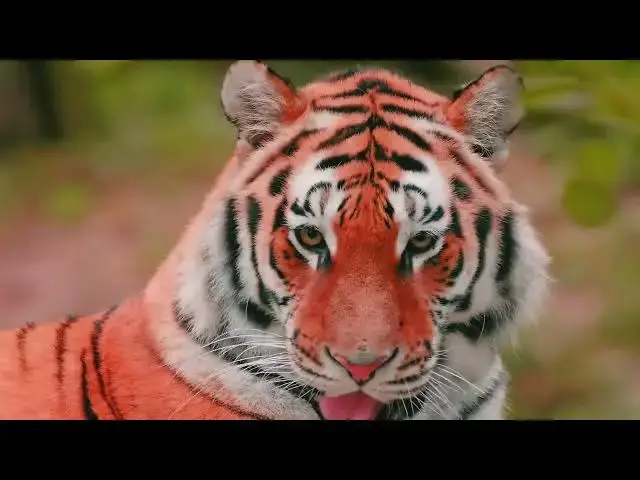Explore the unique adaptations of tiger eyesight and how it stacks up against other night-hunting animals. Learn about the special features that allow tigers to see in low light, their advantages and limitations compared to owls and house cats, and how their vision has evolved to make them effective predators in various light conditions.
Show More Show Less View Video Transcript
0:00
tiger Vision how it compares to other
0:03
nocturnal
0:04
hunters in the shadowy depths of the
0:07
Jungle a pair of eyes gleam in the
0:10
darkness these belong to one of Nature's
0:13
Most formidable Predators the
0:16
Tiger but how does a tiger's Vision
0:19
compare to that of other nocturnal
0:21
Hunters Tigers like many big cats
0:25
possess excellent night vision their
0:28
eyes are equipped with reflective layer
0:31
called the tetum lucidum which sits
0:34
behind the
0:35
retina this layer acts like a mirror
0:40
bouncing light back through the retina a
0:43
second time effectively doubling the
0:45
amount of light the eye can
0:48
capture this is why Tiger Eyes seem to
0:51
glow in the dark when light shines on
0:55
them however tigers are not alone in
0:58
possessing this anim
1:00
ation many nocturnal Predators including
1:04
domestic cats wolves and even some fish
1:08
have a tetum
1:10
lucum what sets Tigers apart is the size
1:13
of their
1:14
eyes Tiger's eyes are about six times
1:18
more powerful at Gathering light than
1:21
human eyes allowing them to see clearly
1:24
in light levels six times lower than
1:27
what we
1:28
need compared to other nocturnal
1:30
Predators tigers have both advantages
1:34
and
1:35
disadvantages owls for instance have
1:38
eyes that are even larger in proportion
1:41
to their body size allowing them to
1:43
gather even more light owls can also
1:47
rotate their heads up to
1:50
270° giving them a wider field of view
1:53
without moving their
1:54
bodies tigers on the other hand have
1:58
forward-facing eyes that provide
2:00
excellent depth perception crucial for
2:03
judging distances when pouncing on
2:06
prey another interesting comparison is
2:09
with smaller
2:10
cats while house cats have vertically
2:13
slit pupils that can open extremely wide
2:15
in low light Tigers retain round pupils
2:19
like
2:20
humans this is because tigers being
2:23
larger don't need to open their pupils
2:26
as wide to let in sufficient light one
2:30
limitation of tiger vision is color
2:33
perception in low light like most
2:36
mammals tigers have poor color vision in
2:39
the dark seeing mostly in Shades of
2:42
Gray This is in contrast to some
2:45
nocturnal Predators like owls which have
2:47
been found to have some color vision
2:50
even in dim light Tigers also have a
2:53
high concentration of Rod cells in their
2:56
retinas which are more sensitive to
2:58
light than cone
3:00
cells this allows them to detect even
3:03
slight movements in the dark but at the
3:05
cost of some visual
3:07
Acuity in very lowlight conditions a
3:11
tiger's Vision might be somewhat blurry
3:14
but they can still detect motion
3:15
extremely well the evolution of tiger
3:19
vision is a testament to their
3:21
adaptability as
3:23
Predators while not strictly nocturnal
3:26
tigers are often active at dawn and dusk
3:30
times when their excellent lowlight
3:32
Vision gives them a significant
3:34
Advantage their eyes have evolved to
3:37
balance the need for night vision with
3:40
the ability to see clearly during the
3:42
day making them effective hunters in a
3:45
variety of light
3:47
conditions in conclusion while tiger
3:50
Vision shares many characteristics with
3:52
other nocturnal Predators it has its own
3:55
unique
3:57
adaptations their large eyes
4:00
reflective tetum lucidum and high
4:03
concentration of Rod cells allow them to
4:06
see in very low light
4:08
conditions however they retain round
4:11
pupils and the ability to see well in
4:14
daylight reflecting their corpuscular
4:17
nature this blend of adaptations makes
4:20
tiger Vision a fascinating example of
4:23
evolutionary fine tuning perfectly
4:25
suited to their role as apex predators
4:29
in diverse environments
#Wildlife
#Wildlife
#Biological Sciences

